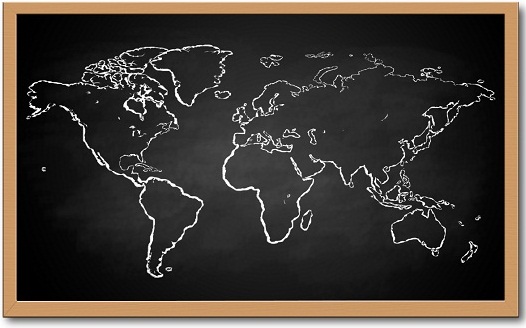The present pack of lesson outlines and other teaching materials is intended for use in Polish high schools where teachers wish to introduce some notions about endangered languages into their lessons. The outlines for the following classes are offered:
Why endangered languages?
Language endangerment or language death has only really come to the attention of the general public in the last ten years or so. Before this time, the study of languages which were said to be ‘dying’ was largely confined to academic publications and to the work of activists who aimed to preserve or revitalize the endangered languages in their own communities. Nowadays, however, it is possible to find on a regular basis articles in newspapers and magazines about languages which are being revived around the world.
As larger or more dominant languages spread, children whose parents speak a small language often grow up learning the dominant language. Depending on attitudes toward the heritage language, those children or their children may never learn the smaller language, or they may forget it as it falls out of use. This has occurred throughout recorded history, but the rate of language disappearance has increased considerably in recent years.
The aim of the activities in the present work pack is to link to this current interest in order to heighten the awareness of younger generations in this area. The expected outcome is two-fold: first, a young global citizen of the twenty-first century is better equipped to face the challenges the modern world presents if she or he is able to see and analyse difference and variation in human society – the world, which was never homogenous in the first place, is increasingly perceived as diverse and outdated concepts such as ‘one country = one language’ are losing ground to more pluralistic worldviews. The writers of the present work package have noted this shift in perception when working with young people in high schools in Poland in order to prepare the activities presented here and our expectations on how much students knew about linguistic diversity – and its endangerment – were surpassed. Secondly, the future of many endangered languages depends on the current generation of young people. We are at a turning point in history in many ways, since if (as the linguist David Crystal asserts) one small language is ‘lost’ every two weeks, then it is only the younger speakers of such languages who can ensure that their languages might survive past the present century. If the present activities help raise young people’s awareness and possibly inspire them to help maintain linguistic diversity in the world, then the authors’ aims will have more than been fulfilled.
More generally, since many young people do not have contact with a minority language in their locality – especially in countries like Poland – getting young people from the wider community interested in this area is also essential, since we need to engage future linguists, anthropologists, sociologists (among others) in this field to ensure a wider academic and professional understanding of the issues involved.
Overall, these activities, containing examples from all over the world, aim to broaden the horizon and the worldview of the next generation and help students realise that ‘endangerment’, whether ecological, sociological or linguistic, is not something which is always ‘out there’, but which can be found much closer to home as well.
Which lessons?
We envisage the material presented here being used in History/Geography, Social and Cultural studies and English as a foreign language lessons. We invite teachers to adapt and modify our materials to make them suitable for use in their schools.

